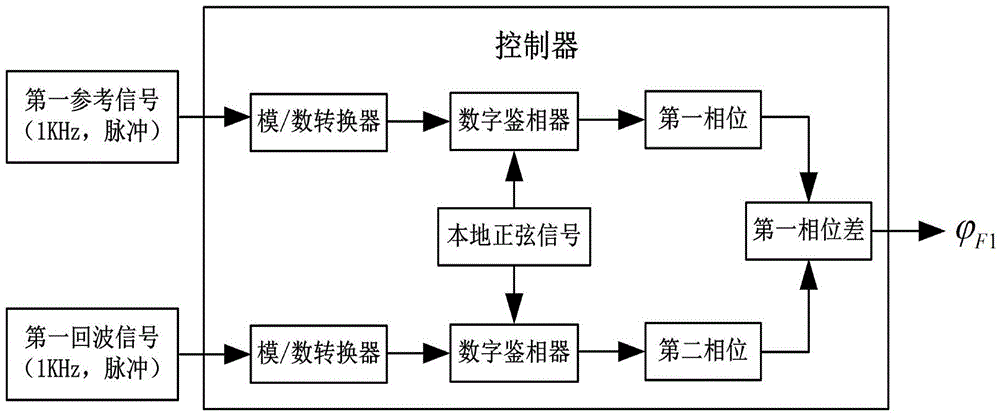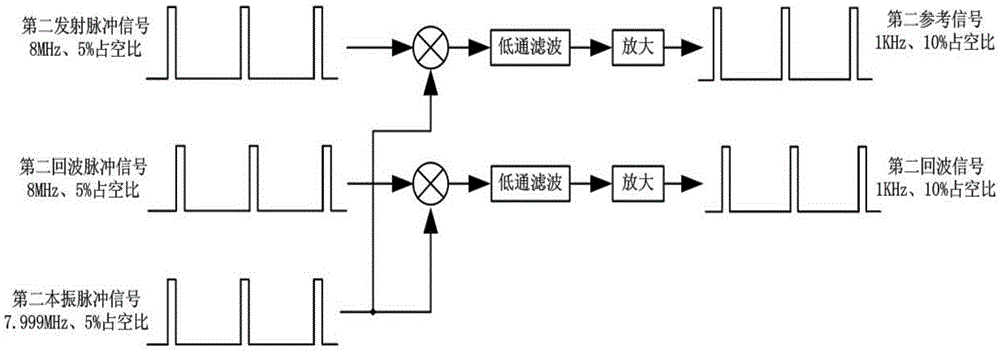Phase pulse-type laser range finding method
A laser ranging and pulsed technology, applied in the field of phase pulsed laser ranging, can solve the problems of short measuring range, poor anti-interference ability, increased measurement time and cost, and achieve low cost, strong anti-interference ability, and measurement fast effect
- Summary
- Abstract
- Description
- Claims
- Application Information
AI Technical Summary
Problems solved by technology
Method used
Image
Examples
Embodiment
[0083] In order to obtain the first phase difference of various frequency components in the first transmit pulse signal whose frequency F1 is 7.5 MHz, the following steps are adopted:
[0084] (1), such as figure 1 As shown, the first transmit pulse signal with a duty cycle of 5% and the frequency F1 of 7.5MHz and the first local oscillator pulse signal of (F1-1KHz)=7.499MHz are obtained through frequency mixing, low-pass filtering, and amplification in sequence The first reference signal; the first echo pulse signal with a frequency F1 of 7.5MHz and the first local oscillator pulse signal of (F1-1KHz)=7.499MHz are sequentially processed through frequency mixing, low-pass filtering, and amplification to obtain the first echo signal;
[0085] (2), such as figure 2 As shown, the first reference signal is sent to the controller, and the controller performs analog-to-digital conversion processing on the first reference signal and realizes phase detection with the 1KHz local sin...
PUM
 Login to View More
Login to View More Abstract
Description
Claims
Application Information
 Login to View More
Login to View More - R&D
- Intellectual Property
- Life Sciences
- Materials
- Tech Scout
- Unparalleled Data Quality
- Higher Quality Content
- 60% Fewer Hallucinations
Browse by: Latest US Patents, China's latest patents, Technical Efficacy Thesaurus, Application Domain, Technology Topic, Popular Technical Reports.
© 2025 PatSnap. All rights reserved.Legal|Privacy policy|Modern Slavery Act Transparency Statement|Sitemap|About US| Contact US: help@patsnap.com



